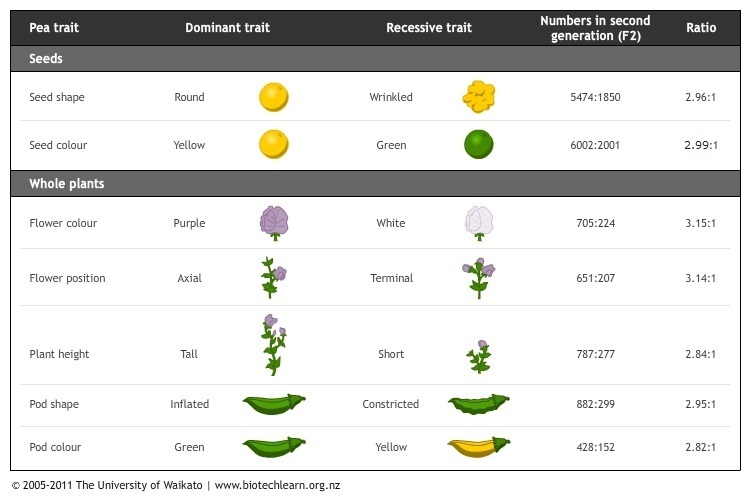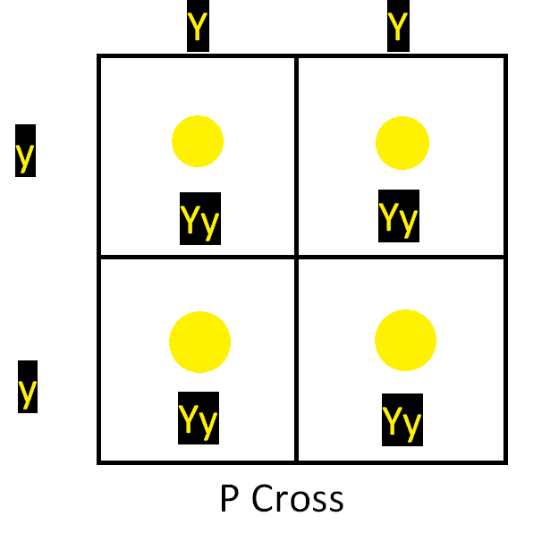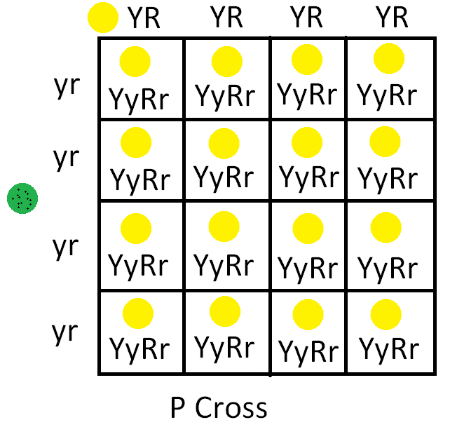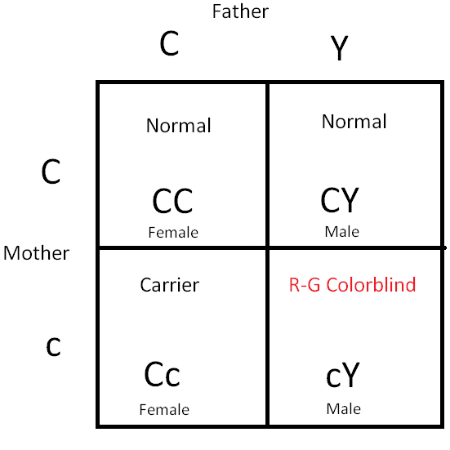Today, Growers Network covers the basics of genetics and breeding for the caregiver level. If you remember your high school biology genetics pretty well, this article should be an easy read for you.

Hi everyone!
Today we’ll be talking about some basic genetics and reproduction topics in plants. We’re covering these topics because we can’t assume where are our readers are at in their understanding of botany, and it’s better to make sure that everyone is starting at the same baseline than assuming and accidentally leaving people behind. So let’s get into basic botanical genetics and reproduction!
Mendelian Genetics
Most of you who have attended a high school biology class should be familiar with the name “Gregor Mendel.” Gregor Mendel was a Catholic friar and abbott who is now famous for his work with pea plants. His work was originally discarded due to being so mundane, but we now understand him as the father of modern genetics. Genes that follow the principles he discovered are referred to as “Mendelian” in honor of him.
So what is a gene? Well, in its simplest form, a gene is a hereditary component that codes for a specific trait, protein, or modification in an organism. That might seem super specific, but it actually becomes pretty difficult to define when you really dive into the weeds.
Regardless, in Mendel’s time, nobody knew a thing about DNA. All people knew was that traits were inherited from parents, and seemed to “blend”. It was commonly believed that children were just a “blend” of their parents genetics. But that’s not how genes actually work. Instead, genes work in an entirely different way, as Mendel discovered. Each gene component (called an allele) codes for a specific output, and both parents contribute one allele to their children, for a total of two alleles for any given gene. He used a variety of different traits to demonstrate this:

Each trait or gene that Mendel studied only had two “forms”, thus being the perfect model to work with. Mendel took meticulous notes and noticed that there were some unusual things happening:
- Children of the same parents exhibited a specific ratio of traits, regardless of the trait being studied.
- Certain traits seemed to “dominate” other, more “recessive” traits.
- Some parents bred “true,” resulting in completely identical children, but when those children crossbred, they could produce different traits.
Now, we’re going to throw a bunch of terms at the wall, and hope they stick for you. If you ever get confused, please feel free to refer back to this article, or to the glossary, where we plan to add these terms:
- Phenotype: Phenotype is the set of traits that can be observed on the individual. Phenotype is determined by genotype (and in real-world cases, environment).
- Genotype: Genotype is the underlying genetic code that results in the phenotype. Genotypes are not expressed, only phenotypes are expressed.
- Allele: One of two or more variations on a specific gene.
- Dominant: When one allele will preferentially express over another allele, the allele is said to be dominant. Dominant alleles are denoted with an uppercase letter (IE: R)
- Recessive: When one allele will hide or recede before a dominant allele, that allele is said to be recessive. Recessive alleles are denoted with a lowercase letter (IE: r). Typically the letter used is the lowercase letter of the dominant allele.
- Homozygous: An individual with two identical alleles for the same gene is homozygous for that gene. (IE: RR, or rr)
- Heterozygous: An individual with two different alleles for the same gene is heterozygous for that gene. (IE Rr)
- Codominant: If two alleles for the same gene are both dominant, they will blend together producing a mixed result. This is codominance. (IE: RZ)
- Sex-linked: Some genes may behave differently depending on the sex of the individual. Such genes are said to be sex-linked. Typically, sex-linked alleles will appear more frequently in males.
- P generation: The “parental” generation. The parental generation for genetic experiments is almost always a pure breeding variety, that would always produce the same outcome if it bred with itself.
- F1 generation: The “filial one” generation are the offspring of the P generation.
- F2 generation: The “filial two” generation are the offspring of the F1 generation.
This may seem like a lot to learn… and it is. So let’s go over a few real-world examples:
Example 1: Seed Color
One of the traits Mendel studied was seed color in peas. He determined that the dominant allele was Yellow (Y) seeds, and the recessive form was Green (y) seeds. When he bred two “true breeding” parents of each variety together (YY x yy), he would always get plants that were Yellow. These “true breeding” parents were homozygous for the Yellow and Green color seeds, respectively.
At first glance, the children of these “True Breeders” were always Yellow (the dominant allele), so it might seem that the recessive trait (Green) was gone. But when Mendel crossbred the children (F1 generation) with each other, the Green trait would return! The children of the F1 generation would have a 3:1 ratio of Yellow to Green seeds, respectively.
So what’s happening? It’s best if we visualize it with something we call a “Punnett Square:”
 |
 |
With the first cross, you can start to get a picture of what’s happening and why the F1 generation is all yellow. You can also start to get a sense of why the F2 generation has green peas showing up again. The dominant trait (Yellow) is overriding the recessive trait (Green) until one of the F2 generation is homozygous recessive (yy). The Green trait “skipped” a generation. The genotype of the F2 generation is 1 YY to 2 Yy to 1 yy.
Example 2: Blood Type
Now we’re going to get a little bit more complicated and introduce something Mendel did not study -- blood type! With blood type, we see codominance come onto the scene, and we now have three alleles and four blood types:
Blood Types
- Type A
- Type B
- Type AB
- Type O
Alleles for Blood Type:
- IA
- IB
- i
You’ll notice something with blood type -- there are two dominant alleles, and one recessive allele. IA and IB are codominant. This means that if an individual has the alleles IA and IB, they will exhibit Type AB blood. If somebody has two i alleles (ii), they will exhibit Type O blood.

Just like with the peas, you can do Punnett squares for each allele as well.
Multiple Alleles
This is where it really starts to get complicated. As I’m sure everybody is aware, no one gene exists in isolation. Every individual is composed of multiple different genes, and Mendelian genetics and Punnett squares do allow for this.
Now we have to start thinking about how reproduction works. Every parent, regardless of their gender, donates half of their genes to their offspring. These genes are passed onto their offspring in the form of gametes, such as sperm and eggs. In order to cross multiple alleles, we have to think about what each gamete might be carrying. The genetics of any given gamete are random -- they will take a random allele from the parent.
Example: Seed Color and Shape
We’ll stick with the familiar trait of seed color and throw in a second trait: Seed shape. Seed shape has two alleles: Round (R) and wrinkled (r). We’ll cross two homozygous parents for our first Punnett square:

You may notice that every single gamete in this case is identical. This is because both parents were homozygous for their traits. But now if we cross the offspring together, we end up with an entirely different portrait:

Whooooo Nelly that was complicated. On either side of the Punnett Square, you can see the different possible gametes from the heterozygous parents. Each parent has four possible gametes, instead of the two from before! As our Punnett square grows, the math stops being simple and starts getting really weird. Phenotypically, 9 express yellow and round, 3 express yellow and wrinkled, 3 express green and round, and 1 expresses green and wrinkled. Genetically, the situation is even more complicated.
You can continue adding genes and alleles, but as you see, this can become very complicated very quickly. If you start throwing in codominant traits or sex-linked traits… you will have a very tough time.
Sex-Linked Traits
But wait, there’s more!

You see, males and females exhibit genetic differences. For example, in humans, men have a Y sex chromosome, and women have two X sex chromosomes. The Y chromosome in men often means that men only get one copy of a gene located on the X chromosome from their mother, because the father donates a Y chromosome. As a result, recessive sex-linked traits appear more commonly in men. One of the most obvious examples is red-green colorblindness, which is very common in male children, but rare in female children. Women can carry the allele for red-green colorblindness without being colorblind.
Say we cross a normal father (CY) with a carrier mother (Cc):

As you can see, men face a 50% chance of exhibiting R-G colorblindness, and women in this cross can only be normal or carriers. There is only one way for women to exhibit R-G colorblindness -- if their father is colorblind and their mother is a carrier or colorblind.
Conclusion
Hoo boy! That was a dense article! If you’re just reading it for a refresher, I hope it helped. If this was your first time learning this material, make sure to review it a few times and try it out for yourself if you’re having any difficulty. Let us know what you think of this article in the survey below, or on the forum!
10 Best Gift Ideas for Cannabis Connoisseurs and Growing Aficionados (2022)
December 7, 2022Developing and Optimizing a Cannabis Cultivation System
December 14, 2021Dealing with Insomnia: How Can CBD Help?
December 10, 2020Your Guide to Sleep and CBD
December 7, 2020
Do you want to receive the next Grower's Spotlight as soon as it's available? Sign up below!

Do you have any questions or comments?

About the Author
Hunter Wilson is a community builder with Growers Network. He graduated from the University of Arizona in 2011 with a Masters in Teaching and in 2007 with a Bachelors in Biology.